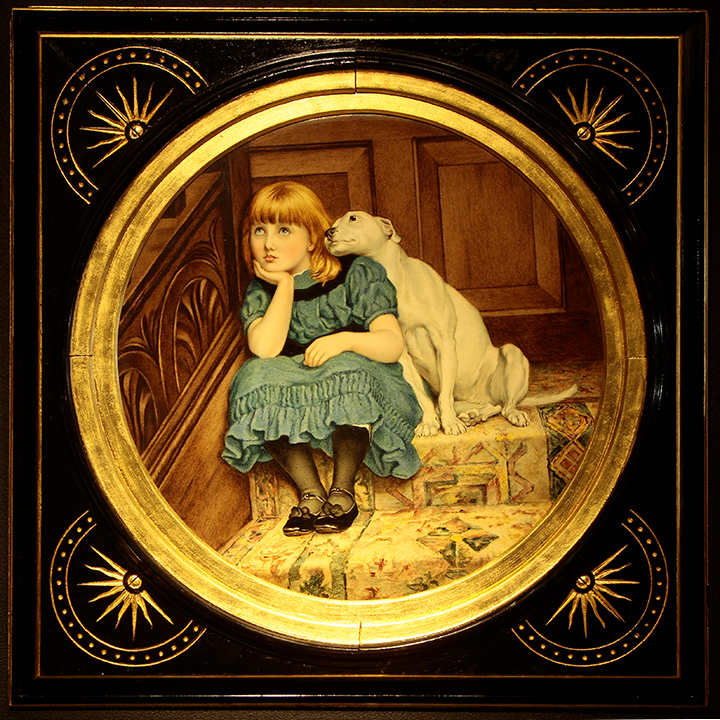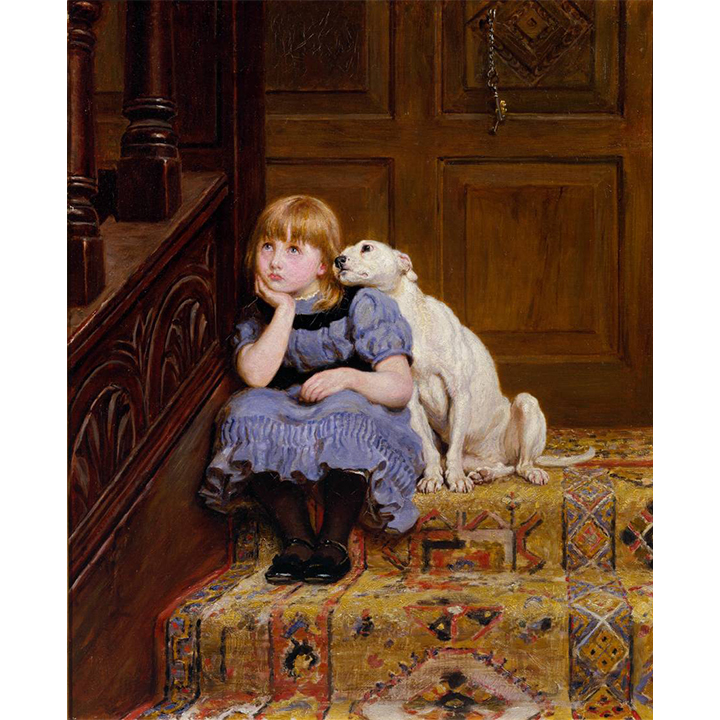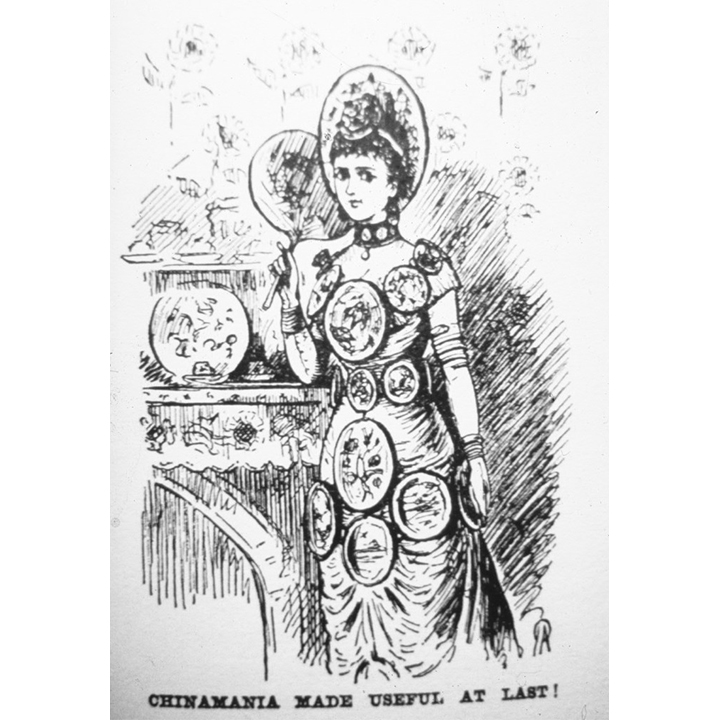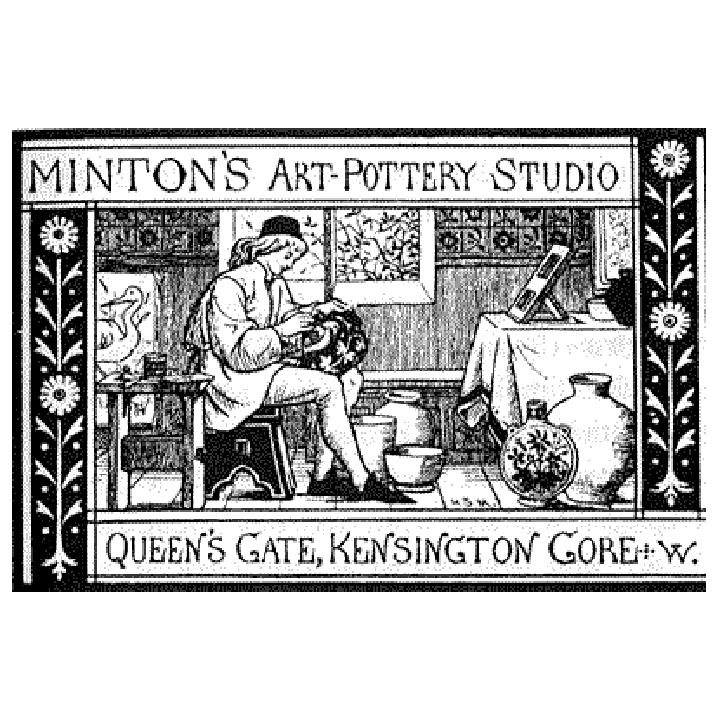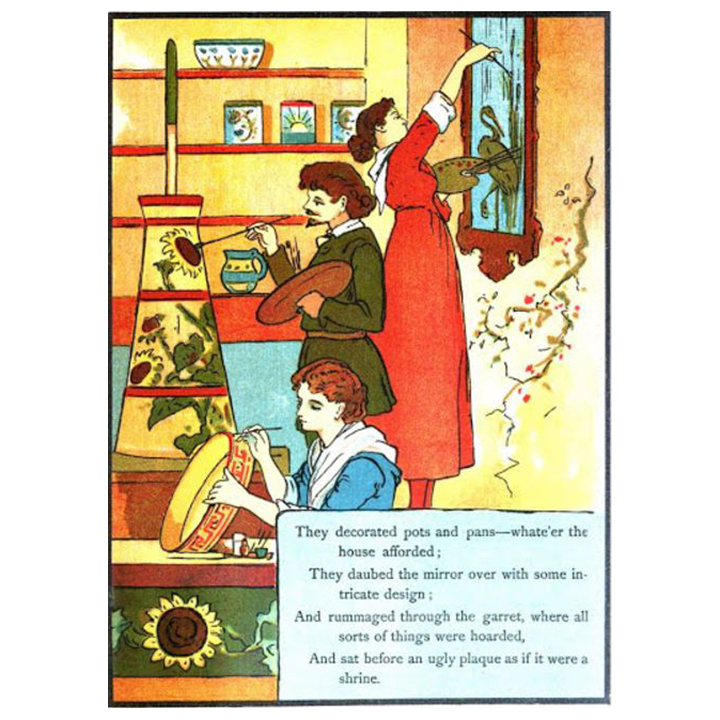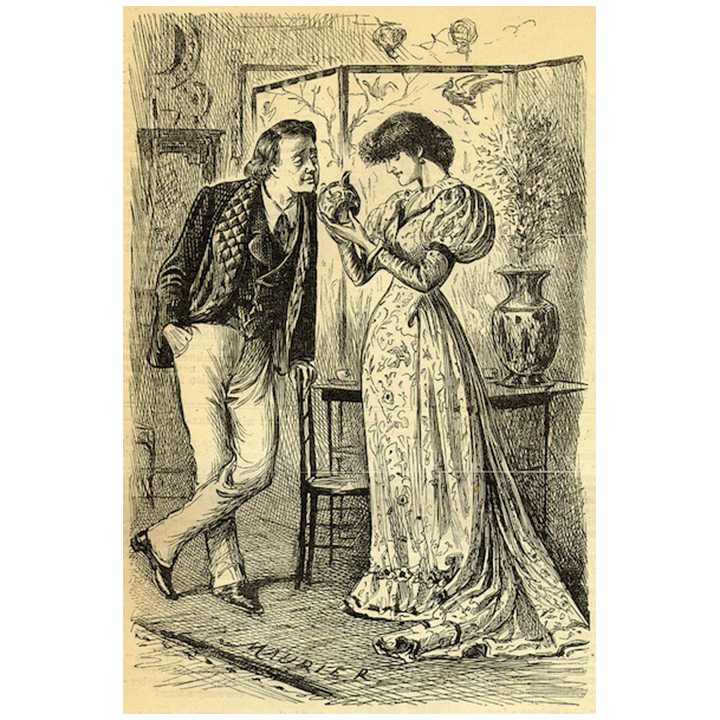One of the most popular artworks at WMODA is Sympathy by the Minton pottery, which depicts a little girl being comforted by her dog as she takes some time out on the naughty step. The pottery plaque hangs in the Art Pottery gallery in a striking aesthetic style ebonized and gilded frame.
The Minton pottery picture was sold originally by Thomas Goode & Co, purveyors of luxury goods in Mayfair, London since 1827. It was inspired by Briton Rivière’s oil painting entitled Sympathy, which was shown at the Royal Academy in 1878. Rivière (1840-1920) achieved immense popularity with the Victorian public for his anecdotal pictures of animals, which occupied most of his career.
Painting on pottery became a very fashionable leisure activity in the 1870s and amateurs worked alongside professional artists as decorators of plaques, tiles, and flasks. In 1871, Minton’s of Stoke set up an Art Pottery Studio in London where young ladies were employed as decorators. They interpreted designs by famous artists of the period and produced original paintings of suitable subjects, such as flowers, fruit, birds, and children. The studio was destroyed by fire in 1875 but Minton’s continued to decorate plaques and tiles in Stoke-on-Trent.
Leading London china shops, such as Mortlock, Howell and James, and Phillips, held pottery painting classes for amateur artists, predominantly young women. Howell and James also opened a new art pottery gallery in 1876 to show-case their annual exhibitions of Painting on Pottery and Porcelain. More than 1,000 works were exhibited at their 1878 exhibition, which attracted more than 10,000 visitors in two months.
The vogue for pottery painting became so intense that the ceramic artists were parodied in the press. George du Maurier’s cartoons for Punch magazine satirized the Aesthetic Movement of the late 19th century, which also encouraged pottery collecting. Pottery plaques or chargers were very popular as wall hangings in the Victorian parlor as they were practical as well as ornamental. Coal fires and oil lighting made 19th century interiors rather grimy and underglaze pottery paintings could be cleaned easily.

